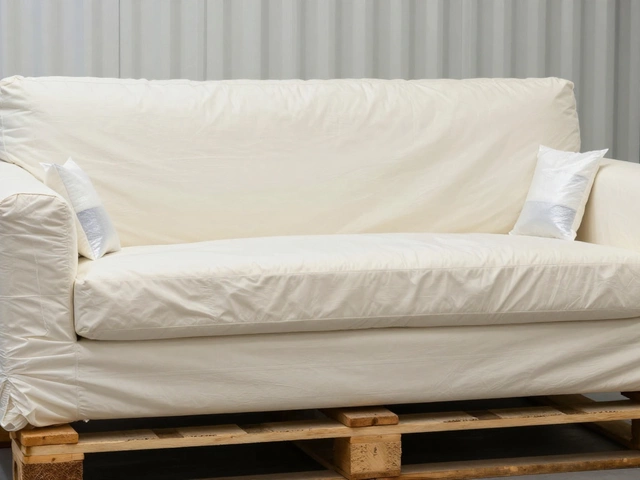The hunt for a good office chair feels endless—and if you're eyeing something from Ikea, safety is probably on your mind. Nobody wants a chair that's going to snap, wobble, or leave your back screaming by lunch. So, let’s get straight to it: are Ikea office chairs actually safe for everyday use?
When we talk about chair safety, we’re not just asking if it’ll hold up your weight (though that matters!). We’re talking about how it handles long work hours, sudden movements, and all the little things—like casters not locking when they should, or the backrest tipping too far. There’s a lot going on under the hood, even in something as basic as an office chair.
Ikea has a reputation for selling budget-friendly furniture, but affordability sparks its own questions. Can you trust a $100 office chair to last and protect you from awkward falls or aches? Stick around—let’s break down what goes into Ikea’s safety measures, what users have actually experienced, and the smart moves you can make (or avoid) if you’ve already got one of these chairs in your home office.
- What Makes an Office Chair Safe?
- How Ikea Tests Their Office Chairs
- User Experiences—What Do Real People Say?
- Common Problems and Fixes
- Tips to Stay Safe and Comfortable
What Makes an Office Chair Safe?
Not all chairs are created equal—especially if you plan to sit for hours at a stretch. So what does safety actually mean when you’re sizing up Ikea office chairs or any other seat for your home workspace?
First up: stability. A safe office chair won’t tip easily, and it spreads your weight evenly so you don’t get that wobbly, ready-to-topple feeling. Most standard office chairs (including Ikea’s) are designed with a five-legged star base. This shape isn’t just for looks; it cuts down your chances of falling sideways if you lean or stretch.
Next, look at adjustability. It might not sound flashy, but being able to tweak your seat height, tilt, and backrest can actually protect you from back, neck, and shoulder pain. Chairs that don’t adjust properly can leave you hunched or dangling, which wears on your body over time. Most safe options let you customize them to match your size and desk.
Materials matter, too. Good-quality chairs use sturdy metal or tough plastic for the frame and a gas lift that supports at least 100kg (220 lbs). Cheap knockoffs sometimes skip on these, making them more likely to break or sink over time. Look for official weight ratings—most office chairs, including budget models, list a recommended max user weight. Stick to it.
Safety doesn’t stop at the frame. The wheels and casters should roll smoothly but shouldn’t fly out from under you if you stand up quick. Good chairs have brake casters or special designs that lock when there’s no weight on the seat.
- Check for certification labels like BIFMA (common for US-market chairs) or EN 1335 (used in Europe). These mean the chair’s passed some real stress and durability tests.
- Don’t ignore the warranty—if a chair’s really built to last, the brand won’t mind backing it up for several years.
One more thing: assembly matters. A chair is only as safe as the way it’s put together. Make sure you follow instructions, use all the screws, and double-check that everything is tight.
How Ikea Tests Their Office Chairs
When you see an Ikea office chair on display, you’re not just looking at some basic plastic and fabric. That chair has already survived a bunch of tests before reaching the shelves. Ikea puts all of their office chairs through safety routines that meet, and sometimes beat, international standards like EN 1335 and ANSI/BIFMA. Basically, they use heavy machines and push their chairs way past normal use to catch issues before you get one home.
Ikea's test lab in Älmhult, Sweden, is where the magic happens. They run chairs through tough simulations, mimicking years of daily use. Here’s what their testing process usually covers:
- Weight load checks: Chairs are loaded with weights (often 110-120 kg, close to 240-265 lbs) for thousands of cycles to see if the seat, legs, and frame can handle stress.
- Seat and back fatigue test: Robots sit down and lean back over 100,000 times, imitating a restless user.
- Mobility and caster roll: The wheels are rolled across rough surfaces and thresholds to make sure they survive repeated movement.
- Armrest tests: The arms are pushed and pulled thousands of times to catch wobbles or cracks.
- Stability checks: Chairs get tilted and twisted to see if they tip too easily or lose balance.
They don’t just keep the results in-house, either. Third-party labs also test Ikea chairs, double-checking that nothing slips through the cracks. This is especially important since those safety rules aren’t just suggestions—they’re legal standards in the EU and other markets.
Here’s a quick table comparing some Ikea test numbers with the minimums from industry standards:
| Test Type | Ikea Test | Industry Minimum |
|---|---|---|
| Seat fatigue | 100,000 cycles at 110 kg | 80,000 cycles at 102 kg |
| Backrest fatigue | 50,000 cycles at 30 kg | 40,000 cycles at 27 kg |
| Caster rolling | 2,000 rolls over thresholds | 2,000 rolls (no threshold) |
So next time you wonder if a $100 chair is really up for daily use, remember these tests are a big reason why Ikea can offer some peace of mind. If you’re getting a chair from them, it’s already survived more abuse from a robot than any home office worker will give it.

User Experiences—What Do Real People Say?
The internet’s pretty open about how real folks feel about Ikea office chairs. Go on Reddit or check out Amazon reviews, and you’ll find a mix of praise, gripes, and the type of detailed feedback you only get from people who actually spend eight hours a day sitting down.
One thing stands out: people appreciate the price. Models like the Markus and Flintan get shoutouts for being affordable, easily available, and not too bad on the eyes. But underneath all that, there’s a pattern. Here’s what users talk about most:
- Assembly: The chairs are usually simple to put together. Most people finish within 30 minutes, even if they’re not super handy.
- Out-of-the-box comfort: Many say these chairs are decent for the first few months. The Markus, for example, is often called comfy if you’re under about six feet or not too heavy.
- Long-term support: This is where things split. Folks under 200 pounds and using the chair less than 4-6 hours a day seem happy. Heavier users or people who work all day often mention sagging cushions, loose armrests, or squeaks after a year or two.
- Adjustability: Ikea's options aren’t as customizable as those from brands like Herman Miller. Basic adjustments? Sure. But no super advanced lumbar tuning.
- Warranty & Service: Ikea gives a 10-year guarantee on some office chair models. But, according to quite a few reviews, actually getting a replacement part can be time-consuming and means dealing with customer service queues.
People who use their Ikea chair at the kitchen table for occasional laptop work don’t have much to complain about. But heavy daily use exposes the weak spots—especially for bigger folks or if you lean back hard a lot.
If you like the nitty-gritty, here’s a real-life snapshot pulled from various online review sites, highlighting common user ratings and pain points:
| Chair Model | Avg. User Rating (5) | Main Praise | Main Issues |
|---|---|---|---|
| Markus | 4.3 | Good support, value for money | Thin cushion, narrow seat |
| Flintan | 4.1 | Lightweight, good price | Short backrest, arms loosen |
| Långfjäll | 3.9 | Looks, size options | Squeaky, low adjustability |
Bottom line—most people don’t call these chairs unsafe, but a lot mention wear and tear popping up faster than expected. If you’re going to be glued to your chair all week, the consensus is: Ikea does the job, just plan to upgrade if you notice things wobbling or breaking down.
Common Problems and Fixes
Not every Ikea office chair comes with problems baked in, but over time, certain issues keep popping up in customer reviews and online forums. Here are a few of the main troublemakers—and what you can do about them.
- Wobbly Bases: After a few months, some users say the base of their Ikea chair feels loose. Usually, this comes from screws working themselves out. The fix? Tighten all bolts and screws every couple months. If the metal plate under the seat seems bent, reach out to Ikea—especially if the chair's still under warranty.
- Creaky or Stiff Movement: If your chair squeaks every time you lean back or roll around, grab some silicone spray or basic oil. Target the wheels, the tilt mechanism, and anywhere metal rubs together.
- Flat Seat Cushion: The padding on affordable chairs like the MARKUS or FLINTAN tends to flatten with heavy use. For extra comfort, try a seat cushion or memory foam pad on top. If things get really bad, lots of folks just replace the whole chair after a couple years—the price kinda makes that doable.
- Gas Lift Issues: Some people report their chair won’t stay up and keeps sinking. Usually, the pneumatic gas lift is wearing out. Replacing the gas lift isn’t too tricky, and there are universal kits online for $15-$30 that fit most Ikea models.
- Backrest Won't Lock or Tilts Too Much: On certain models, the tilt lock wears out or won't engage well. If a quick check with the instructions and lock adjustment doesn't work, let Ikea know. They offer parts for many chairs, even several years down the line.
The most searched Ikea office chairs have different quirks. Here’s a breakdown of the most common complaints by model, using review site data from 2024:
| Model | Most Common Issue | Reported Fix |
|---|---|---|
| MARKUS | Flat padding | Cushion or replace |
| FLINTAN | Loose armrests | Tighten screws |
| LANGFJALL | Back tilt wear | Check/replace lock |
| RENBERGET | Creaky wheels | Lubricate wheels |
| ALEFJALL | Assembly troubles | Follow manual closely |
One last tip: always hang onto your assembly tool and extra screws. Ikea’s design means you’ll probably need those little Allen keys again if anything starts shaking or rattling down the road. Most Ikea chairs come with a 10-year guarantee against basic manufacturing defects, so it pays to keep your paperwork handy too.

Tips to Stay Safe and Comfortable
If you want to get the most out of your Ikea office chair and actually feel good at the end of a workday, you need to use it the right way—no shortcuts. Here’s what actually matters, laid out step-by-step.
- Always adjust your chair to fit you—not the other way around. Make sure your feet touch the ground, your knees are at a right angle, and your lower back is supported by the chair. Ikea’s basic chairs like the MARKUS and JÄRVFJÄLLET have customizable lumbar support, so use it.
- Check your chair’s screws and bolts every few months. Ikea actually recommends this in their instructions. Chairs can loosen over time, and a wobbly seat is the fastest route to an accident.
- If your chair has casters, only use it on a hard, flat surface or buy a chair mat. Soft carpet slows wheels and can make the chair tip. Ikea’s safety reports mention this as a common cause for minor injuries.
- Don’t overload the chair—really. Ikea office chairs are tested to hold up to 243 lbs (110 kg). If you go over, you’re gambling with the gas lift and the base.
- Take breaks. Even a well-designed **Ikea office chair** can’t save you from hours of sitting still. The Mayo Clinic says standing up every 30 minutes is smart for circulation and your back.
For a snapshot of how the most popular Ikea models line up on comfort and safety features, check this table:
| Model | Max Weight (lbs/kg) | Lumbar Support | Adjustable Height | Safety Testing Standard |
|---|---|---|---|---|
| MARKUS | 243 / 110 | Yes | Yes | EN 1335 |
| JÄRVFJÄLLET | 243 / 110 | Yes | Yes | EN 1335 |
| LANGFJÄLL | 243 / 110 | Yes (fixed) | Yes | EN 1335 |
One last trick—if you ever hear squeaks or feel wobbling, stop and inspect before you ride it out. Most issues with Ikea chairs are solved with a quick tightening or swapping wheels. Comfort and safety aren’t set-and-forget; they need little check-ins once in a while.







